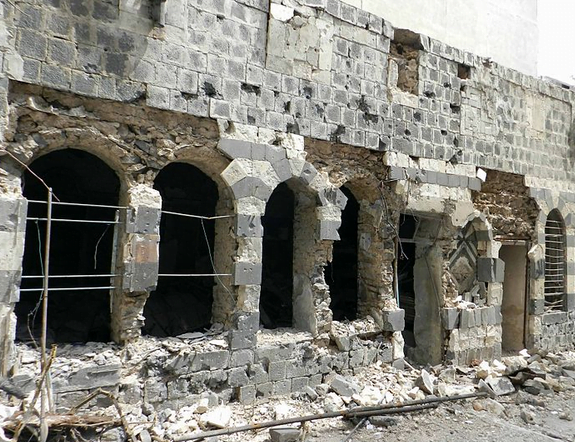A remarkable thing just happened in Syria.
After two horrid years, the siege of the old city of Homs is ending. Rebel fighters are retreating to the country side. And another rebel group has agreed to lift the siege of two towns in an adjacent province. Anne Bernard in the New York Times posts this reports:
The last remaining insurgent fighters in the Old City of Homs in central Syria began evacuating on Wednesday morning, antigovernment activists and state media said, under a deal that would hand the highly symbolic district to the military after two years of blockades and bombardments.
The deal, hammered out between security officials and rebel representatives with the participation of Iran’s ambassador to Damascus, was viewed by both sides as a turning point — for government supporters a glimmer of hope for a return to normal life, and for opponents a bitter, if increasingly expected, defeat in what was once called “the capital of the revolution.”
Insurgents in Aleppo Province, to the north, will lift their longstanding blockade of two villages under the terms of the agreement, activists briefed by rebel negotiators said. If the deal holds, it could be the most complex and far-reaching yet struck between combatants in a three-year conflict that has taken more than 150,000 lives.
About 2,000 people, mainly fighters and their families, were expected to travel to rebel-held areas in northern Homs Province in bus convoys escorted by United Nations vehicles, spokesmen for the insurgents said. The deal allowed each fighter to take one bag and their individual light weapons, and one rocket-propelled grenade launcher was permitted per bus.
This is a big deal. If this agreement holds it could provide a blueprint for ending the civil war. And if it holds in Homs, there is no reason why it cannot be replicated in other flashpoint towns and cities. And if that happens, the Syria civil war may fizzle out, one local ceasefire at a time.
On the one hand, this is deeply problematic for the fact that local ceasefires do nothing to address the underlying grievances that lead to the outbreak of violence in the first place. In fact, just the opposite is the case: in many ways these deals would entrench Assad more deeply. On the other hand, to the extent that a local ceasefire deal is also accompanied by increased humanitarian access to besieged populations it would be the most expedient way to ensure that more lives are not lost in this grinding conflict.
The humanitarian crisis inside Syria is of an order of magnitude not seen in decades. Hundreds of thousands have been killed, and millions displaced. If local ceasefires mean the return of humanitarian aid and a basic respect for the rights of civilian non-combatants, such developments are probably the best way to reduce the toll this conflict is taking on civilian populations. It may be unsatisfying, but given the halting pace of an internationally negotiated diplomatic solution to this crisis local ceasefire deals like the one in Homs may be the best way forward.
